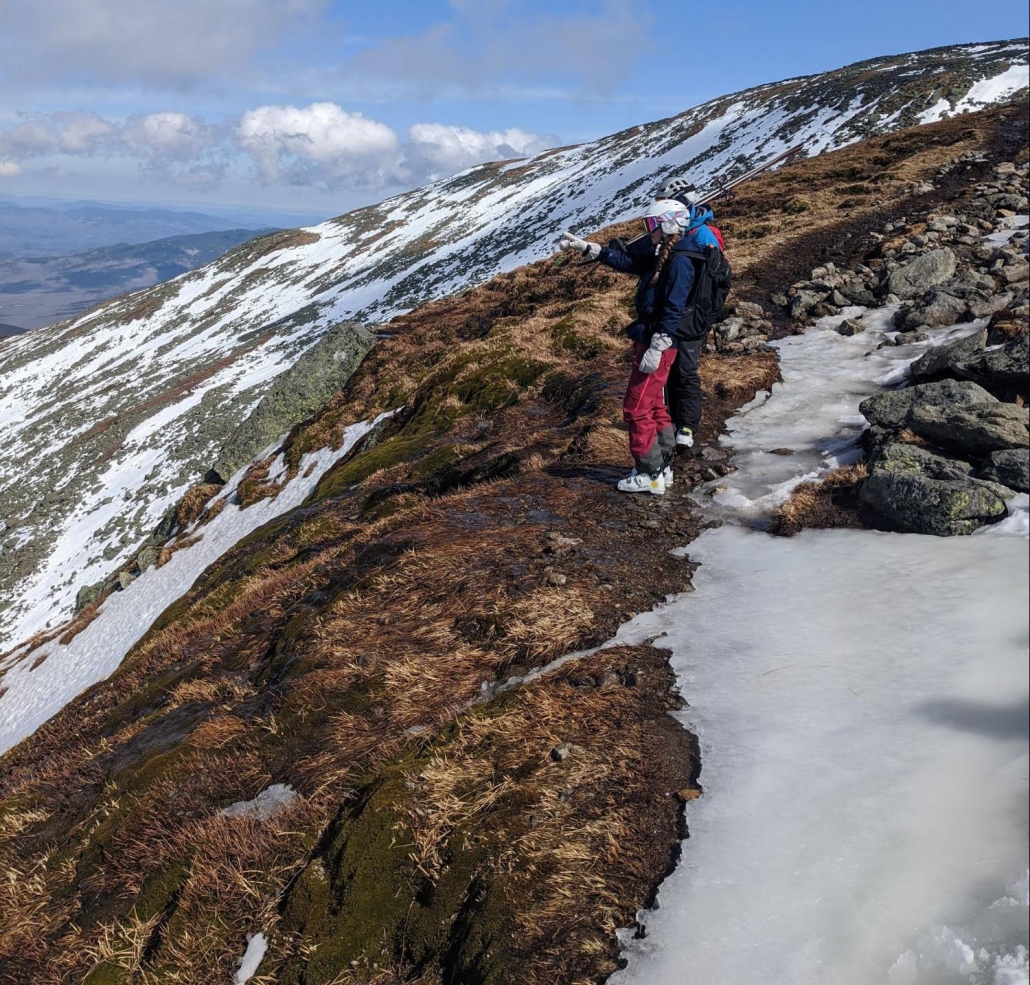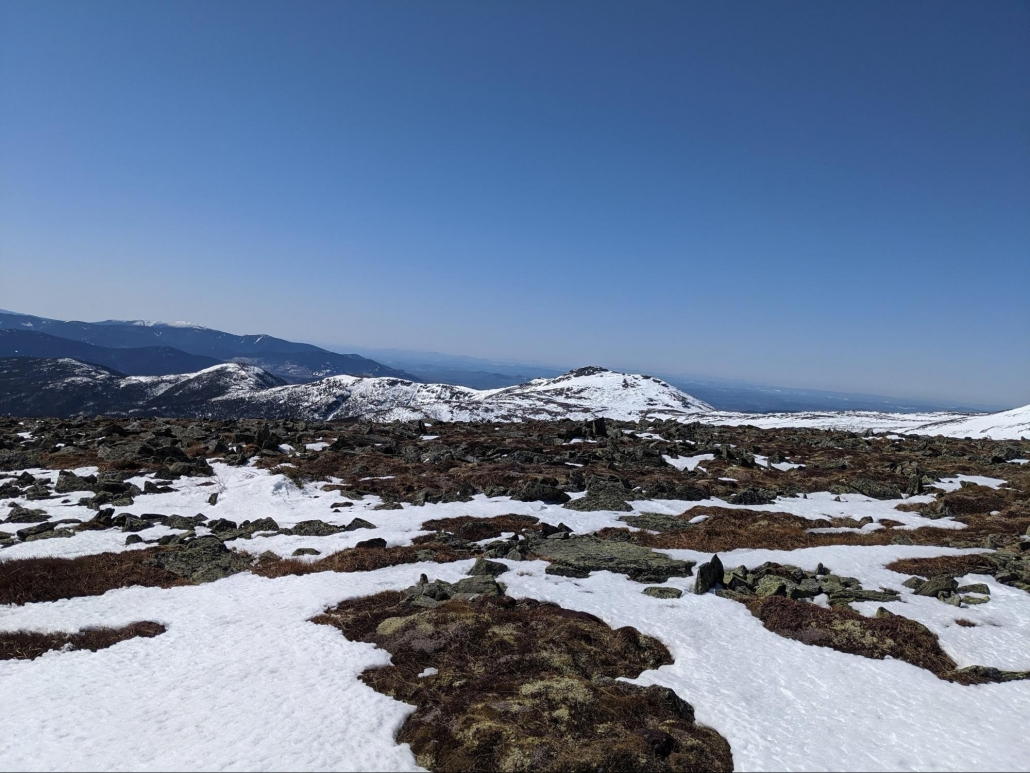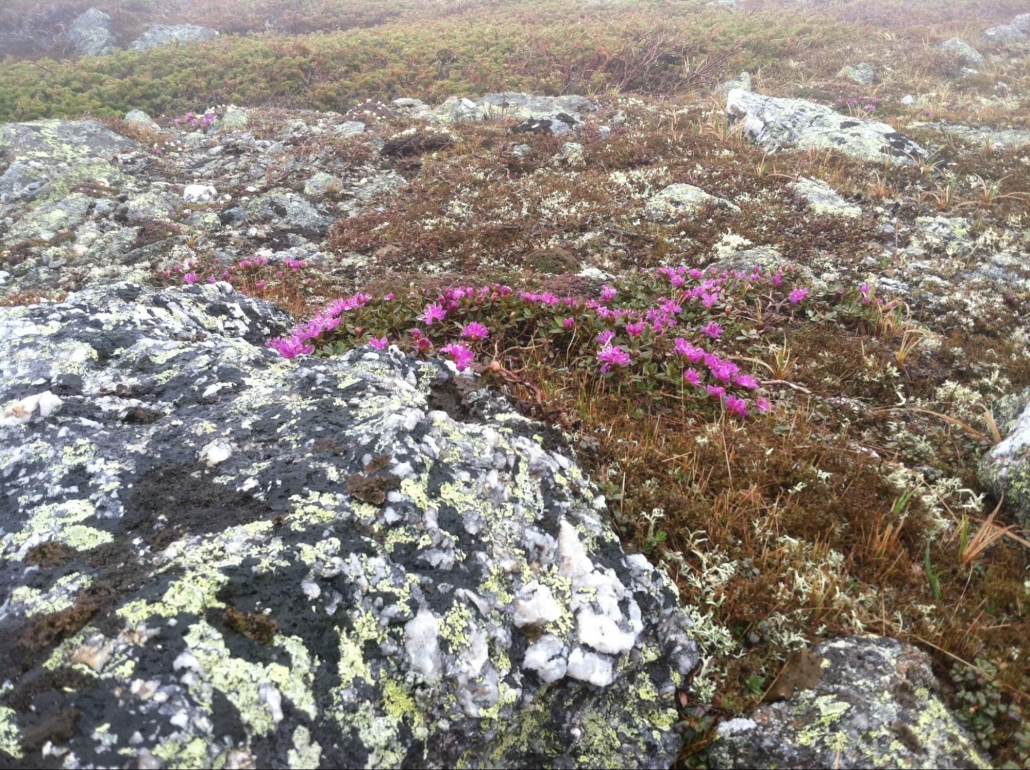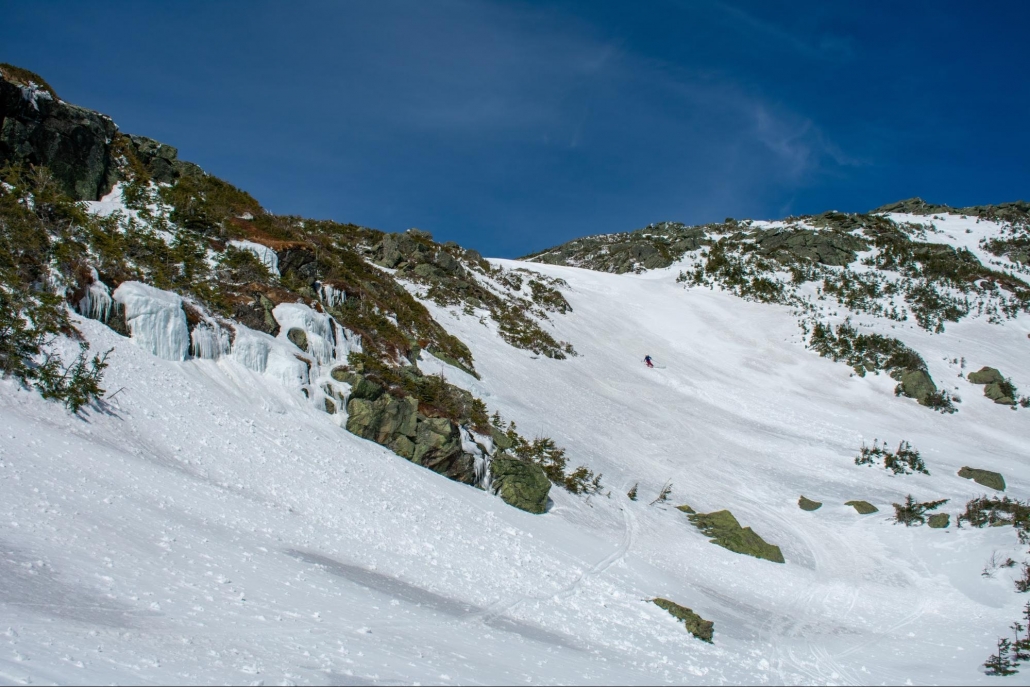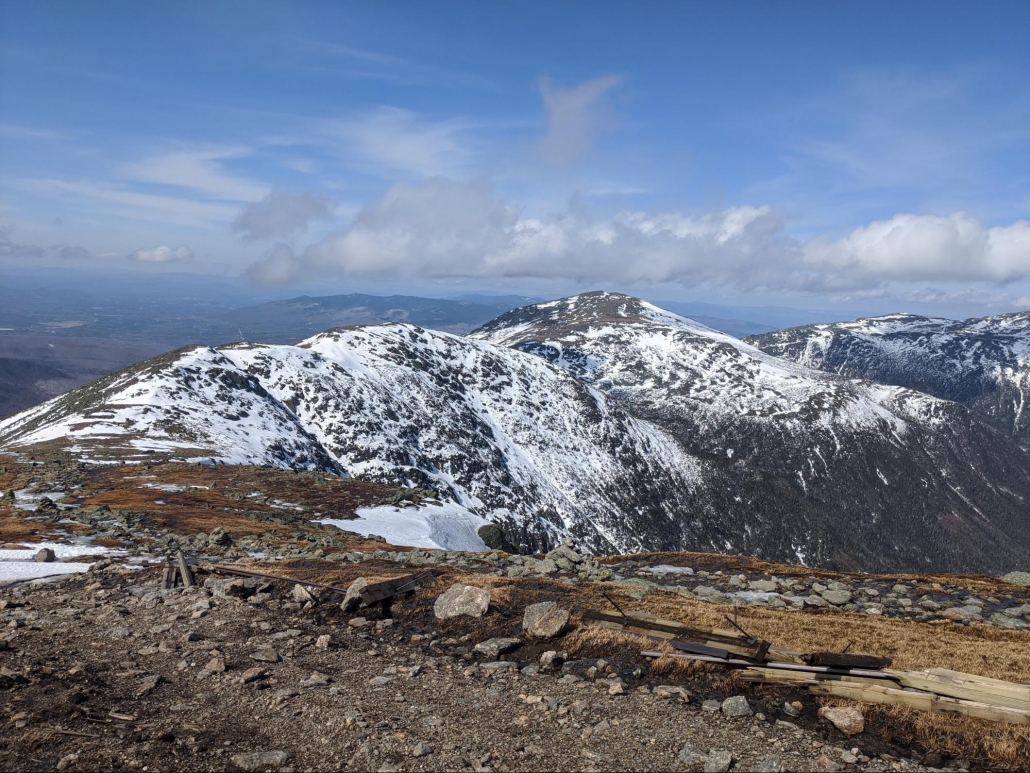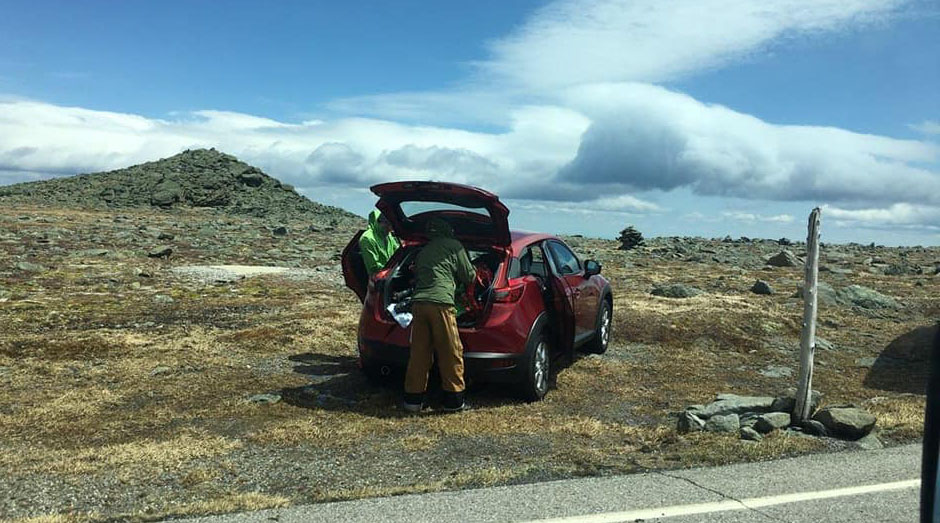At the avalanche center, we talk daily about mountain hazards that have the potential to harm us – skiers/boarders, climbers, and hikers. Consider though, that as individuals and as a very large ski community, we have the ability to also cause harm to our mountain ecosystems. Think back to the last time you “topped out” a gully in the springtime. What was there? Snow? Blocks of exposed rock? Short, shrubby plants, and mats of low-growing vegetation?
The answer to all of these questions is probably yes, which means we have a choice of which surfaces to travel on.
Often after a tiring climb up a 1000’ ski run or a technical climbing route, the last thing we think about is what is under our feet and often the easiest thing to do is find the softest places to step and the path of least resistance. For fragile alpine flowers and vegetation, this can be a death sentence.
A common response to mentioning vegetation trampling is, “the plants have survived the harshest weather conditions on the planet, I don’t think stepping on them is any worse.” Unfortunately, this is not true. Alpine vegetation, including a handful of plants that grow nowhere else in the world, has done an incredible job at adapting to the harshest winter environment on the planet over thousands of years. These adaptations allow even the smallest flowering plants to survive through hurricane-force winds, deep snowpacks, sub-zero temperatures, and all types of precipitation. Unfortunately, these plants have not had thousands of years to adapt to the patterns and impact of backcountry skiers and off-trail wanderers and even a couple bootprints can be catastrophic for these fragile species.
To see specific details on some of these plants, check out this article.
Trampling and disturbance of alpine vegetation is most commonly seen adjacent to trails and in high traffic areas including Mount Washington, around huts and shelters, near the Auto Road, and increasingly, we are seeing this disturbance at the top of most of our popular ski runs. Trampling is no one individual’s fault, but rather a product of our community travel habits in the mountains. Sure, Tuckerman has been dealing with this issue for years (and it shows) but with a huge increase in use to other ravines and more remote zones, we have a critical chance to evolve our travel behavior as a community.
WHAT CAN WE DO?
Most of the ski lines and climbing routes in the Presidentials are not right next to a trail, so traveling off-trail to access these routes is normal. How we do this as a community is incredibly important for the health of these ecosystems and luckily, there are a few critical steps we can take to drastically mitigate alpine plant trampling.
- Like the Leave No Trace principle says, travel and camp on durable surfaces. For us, this means walking on snow, rock, and trail whenever possible. We know how awkward it can be to walk on alpine schist in hard boots – just think of it as a little extra training and get your poles out for balance.
- Unless there is significant snow coverage, lose the idea that your approach route will be in a straight line. It will likely not be straight nor the path of least resistance. It might add a little distance and time to your day, but the mitigation of your negative effect on the ecosystem is well worth the cost of a few extra steps.
- Talk to your group about this ethic, and spread the word.
- Consider not going to a super remote objective that has all but melted out, and instead wait until there is good coverage. It’s not going anywhere!
As the Mount Washington Auto Road opens up this year and many folks will take advantage of this mechanized ski access, Great Gulf is one of the areas where we see this impact most in addition to the Eastside ravines. If you do find yourself driving your car up to top-access big mountain skiing, we ask that you please use your fresh legs to take an environmentally-conscious approach to your line, which might include a winding route and lots of rock hopping.
Some of the area on the sides of the Auto Road is flat and appears to be good for parking. However, the Auto Road restricts parking to the designated pull-offs and lots in order to mitigate the impact on the alpine zone.
Just as different climbing and skiing areas across the country have written and unwritten ethics and rules, we would love to see the White Mountain backcountry community wholeheartedly adopt this ethic as the “norm” of backcountry and spring backcountry skiing in our alpine zones. Like the adage, “you don’t know what you got until it’s gone,” we are incredibly lucky to have amazing ski terrain on our public lands right here in New Hampshire. For current and future generations, let’s take care of it.
